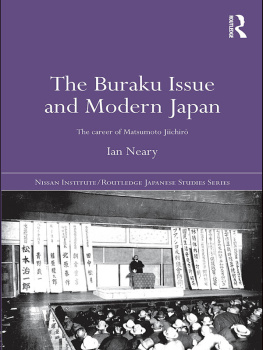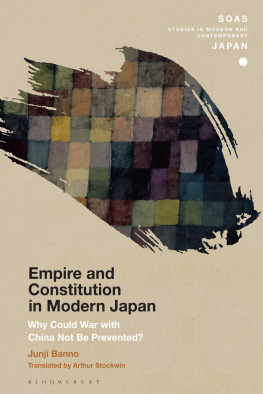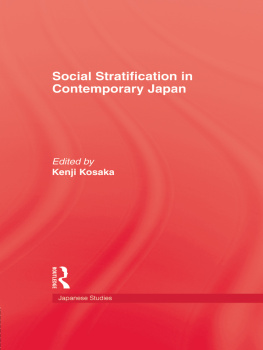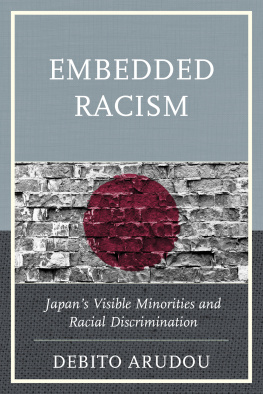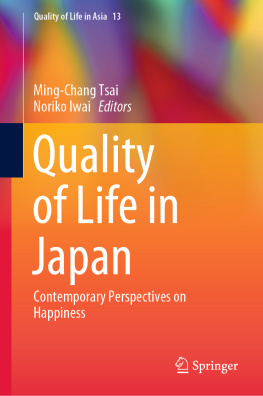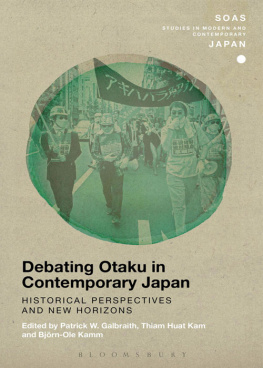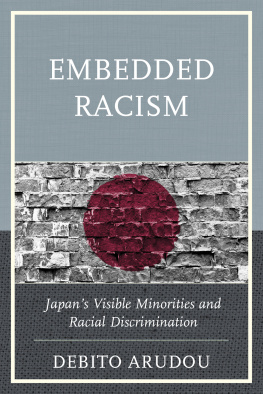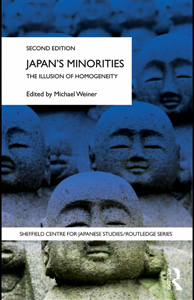AN INTRODUCTION TO THE
BURAKU ISSUE
QUESTIONS AND ANSWERS An Introduction to the
Buraku Issue Questions and Answers Translated with an Introduction by
Alastair McLauchlan First published in Japanese as Nymon Buraku Mondai: Ichimon Itt
by Suehiro Kitaguchi, Kinki University, Osaka,
between 1986 and 1993 AN INTRODUCTION TO THE BURAKU ISSUE
QUESTIONS AND ANSWERS First published 1999 by
JAPAN LIBRARY Published 2013 by Routledge 2 Park Square, Milton Park, Abingdon, Oxon OX14 4RN 711 Third Avenue, New York, NY 10017 USA Routledge is an imprint of the Taylor & Francis Group, an informabusiness English translation and Introduction Alastair McLauchlan 1999 All rights reserved. No part of this publication may be reproduced, stored in a retrieval system, or transmitted in any form or by any means, without prior permission in writing from the publishers, except for the use of short extracts in criticism. British Library Cataloguing in Publication Data
A CIP catalogue entry for this book is
available from the British Library ISBN 978-1-315-07351-4 (eISBN)
Set in Bembo 12 on 13 point by LaserScript Ltd, Mitcham, Surrey Contents | by Suehiro Kitaguchi | | by Alastair McLauchlan |
This book is a compilation of questions and answers for serious researchers of the Buraku issue. Buraku, however, is more than just a word, for within its parameters lies a tightly interwoven tapestry of such diverse fields as history, liberation activities, solution strategies, Dwa Initiatives and incidents of discrimination. For many people, the starting point for addressing the Buraku problem lies in their own uncertainty regarding the whole issue, a scenario which includes those who, especially in recent years, have preserved and even fostered a 'discrimination awareness' over anti-Buraku prejudice by walking away from their own nagging doubts about Dwa Initiative projects and the spurious tactics of sham Dwa groups. According to a strongly-worded report by the Dwa Initiatives Commission, the long-standing, but ill-conceived, notions of 'let sleeping dogs lie' and of Buraku separatism remain firmly entrenched in the minds of many people. Another problem which arises during research into Buraku employment and everyday life is that opinions are frequently expressed in the form of questions. Given the present situation, however, we are unable to provide adequate answers to such queries, and the conclusions of investigative studies are often quite divorced from the original goals of the original research. Obviously, committed researchers into Buraku issues such as employment and regional circumstances have a crucial role to play. It could equally be said, however, that while maintaining the momentum of Buraku research on one hand, these same researchers are those who remain among the most frustrated. The status quo has generated numerous calls from researchers seeking a publication which would provide them with convincing, authoritative answers to the specific questions and the general queries they face. Unfortunately, most 'Question and Answer'-type publications have been limited to pamphlets and small booklets, directed either at those who have participated in the research, or at non-specialists, whilst definitive books for serious researchers and authorities have been few and far between. Although I have written this book in the hope of meeting the needs outlined above, there remain many areas which are less than complete, and others where many of the researchers' demands are still less than satisfactorily answered. In compiling this book, I was pleased to be able to refer to, and to include material from, a number of published works dealing with Buraku issues, in particular Buraku Kaihoo Kihon Seitei wo Mezashite , prepared by the Central Executive Committee of the National Campaign for the Enactment of the Fundamental Law on Buraku Liberation. Finally, I wish to express my sincere thanks to all those people who did so much to help make this book possible; I would also welcome any comments that readers might have. June 1986
Suehiro Kitaguchi Editors Note The word Dwa is written with the Japanese characters tor 'similar' and 'harmony', so that the term's overall connotation is 'people in harmony'. Dwa is an official governmental term, used since 1941 to refer to administrative policies and services related to Buraku issues and conditions. Dwa Initiatives are works projects and activities, carried out largely under special legislation, such as improvements to housing, roads, accommodation, education, public facilities, flood relief etc. Dwa education is an umbrella term covering all aspects of educational activities by the government and by the Buraku movement, for solving problems caused by anti-Buraku discrimination. For government institutions, it means improving educational opportunities through better facilities, more teachers, scholarships etc, while for the Buraku movement, it defines a set of educational strategies for attaining parity in education achievement, community involvement and materials to inform about Buraku issues. Alastair McLauchlan Of all the Japanese material dealing with Buraku issues that I have read, Buraku Moudai: Ichimon Itt by Suehiro Kitaguchi is one of the most useful, and its translation into English is long overdue. In the struggle to eliminate the many historical inaccuracies, misconceptions and prejudices about Buraku issues, and in order to remove anti-Buraku discrimination from Japanese society, the crucial ingredient is accurate information. This book provides authoritative and insightful background to many aspects of the Buraku debate, information which is now available to non-speakers of Japanese. Even today, whenever Buraku issues are discussed, the same mistaken beliefs such as 'they were all leather workers... they've all got new houses now so what are they complaining about? ... I don't think there are any Buraku people left in Japan today ... dirty ... they're better off than most ordinary Japanese now... etc' often form the basis of the conversation. There are several reasons for this continued lack of accurate information. Firstly, Japanese people themselves are reluctant to talk openly about Buraku issues, particularly with outsiders, and given that the issue did not appear in Japanese school texts until 1972, it is perhaps understandable, however unacceptable, that many Japanese people over the age of about thirty-five may still be relatively uninformed on the issue. Furthermore, because there is almost no media coverage on Buraku issues in Japan, nor is it perhaps surprising that even today, in outer regions of Japan such as Hokkaido, the word buraku often has no connotation other than its original meaning of small hamlet. Secondly, there has been very little material dealing with anti Buraku discrimination published, particularly outside of the Japanese language, the obvious ramification of which is that much of what does appear is simply a re-examination ot what has already been said, including all the original inaccuracies, prejudices and judgemental conclusions. Thirdly, most of the information which is available lacks any real attempt to deal with the realities of anti-Buraku discrimination in that it is frequently based on research of non-Buraku people giving their personal opinions on Buraku circumstances. Fourthly, some information comes from very frustrated Buraku citizens who have internalized their situation to such an extent that in telling their side of the story, they may rely too heavily on the most severe examples ot discrimination and injustice. One understands their frustration, but one of the ramifications of debating extreme points of view is that it all too often alienates the cause from the essential popular support of the middle ground. | Next page



